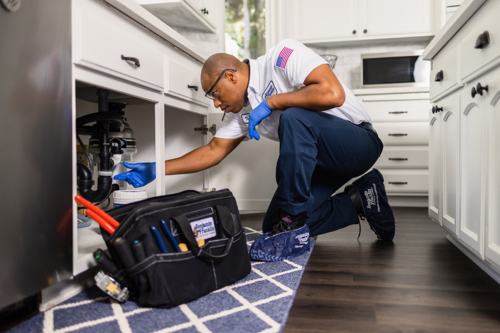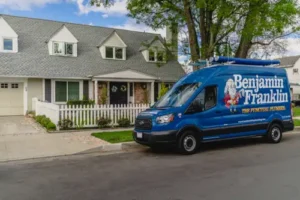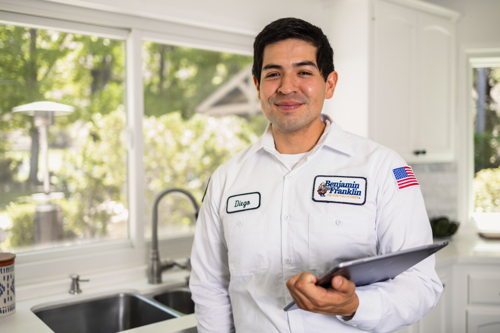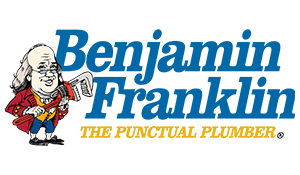Drip, Drip, Dread: Spotting and Stopping Household Water Leaks
Water leaks can be tricky. They sneak up on you, like an uninvited guest overstaying their welcome. Rather than just a nuisance, they can create serious damage in a home. If you suspect a leak, it’s crucial to act swiftly.
This guide will walk you through the steps to detect and address a potential water leak in your home, ensuring both peace of mind and a dry living space.
Detecting the Tell-Tale Signs of a Water Leak
Water leaks are not always obvious. Sometimes they whisper rather than shout. Look for these signs around your home: Moisture marks on ceilings or walls are common indicators. These discolored patches can be subtle at first. Keep an eye out, especially after heavy rainfall or plumbing usage.
Another clue is the presence of mold or musty odors. Mold thrives in damp conditions, so spotting it can be a red flag. Additionally, listen carefully. The sound of dripping or running water when all faucets are off can be a clear signal.
Investigating Unexplained Spikes in Your Water Bill
Your wallet might notice the leak before you do. An unexpected rise in your water bill without increased usage is suspicious. Compare recent bills to identify any anomalies. Even a small, unnoticed leak can waste hundreds of gallons, causing a notable surge in costs.
To further investigate, perform a simple meter test. Shut off all water sources in your home. Then, check the water meter. If it’s still moving, you likely have a leak. This method provides a straightforward way to confirm suspicions.
Inspecting Common Culprits of Water Leaks
Some spots are more prone to leaks than others. Check under sinks and around toilets for pooling water or dampness. Even a slow drip can indicate a larger underlying issue.
Don’t forget to examine appliances like washing machines and dishwashers. Inspect hoses and connections for signs of wear or leaks. Outdoor faucets and irrigation systems can also be problematic. Ensure they’re turned off properly and check for any unwanted drips.
Utilizing Technology to Pinpoint Leaks
We live in an age where technology can solve many woes, including leaks. Consider water leak detectors or moisture sensors. These gadgets provide real-time alerts when they detect water where it shouldn’t be.
Some advanced models can even shut off the water supply automatically. Investing in these devices can prevent minor leaks from escalating into major problems.
Knowing When to Call in the Professionals
Sometimes, leaks are beyond DIY capabilities. If your attempts don’t stop the leak, or if the problem seems complex, it’s wise to call a plumber. Their expertise ensures the issue is addressed properly, preventing further damage. Also, if you find yourself dealing with persistent or multiple leaks, professional help is essential. They’ll have the tools and knowledge to provide a long-term solution.
Understanding the Risks of Ignoring Water Leaks
The dangers of ignoring leaks go beyond water damage. Structural integrity can be compromised over time. Constant exposure to moisture weakens wood and other materials, potentially leading to costly repairs. There’s also the health risk. Mold growth from unchecked dampness poses respiratory threats. Addressing leaks promptly can spare you from these hazards.
Exploring Preventive Measures to Avoid Future Leaks
Prevention is the best defense against leaks. Regular maintenance checks are essential. Inspect visible pipes, faucets, and appliances periodically to catch potential leaks early.
Further, consider upgrading old plumbing fixtures. Modern options are often more durable and efficient. Installing water-saving devices can reduce wear and tear on your system, minimizing the risk of leaks.
Building a Network of Reliable Resources
Having a trusted plumber on speed dial is invaluable. Establish a relationship with a local professional for emergencies. It’s also wise to collect information on reliable plumbing services and parts suppliers.
Online platforms and community forums can provide recommendations. Engaging with a network of resources prepares you for any plumbing challenges that arise.
Practicing Mindful Water Usage
Be conscious of your water habits. Simple actions, like turning off the tap while brushing your teeth, can make a difference. Regularly check for running toilets or dripping taps. Being mindful helps conserve water and reduces the strain on your plumbing system. This proactive approach can prevent potential leaks from developing.
Encouraging Sustainable Home Practices
Water conservation benefits both your home and the environment. Adopt sustainable practices like collecting rainwater for gardening. This reduces reliance on your main water supply and promotes ecological responsibility.
Additionally, consider eco-friendly plumbing upgrades. Low-flow fixtures and dual-flush toilets save water and reduce utility bills, all while minimizing the risk of leaks.
Conclusion
When water leaks occur, fast action is your best ally. Identifying and addressing issues early can save you stress, time, and money. Every homeowner should be vigilant, and equipped with the knowledge to tackle leaks head-on. Remember, a dry home is a happy home. Take charge, protect your space, and ensure it remains leak-free for years to come.
